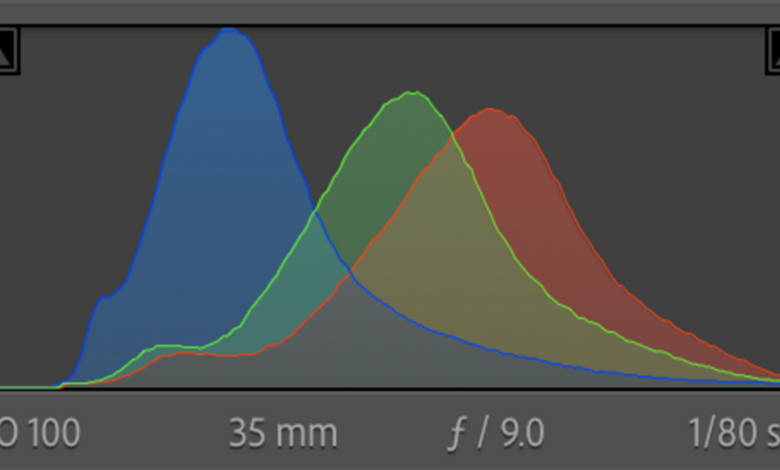Is the Histogram Still Relevant in Today’s Photography?

In an era where technological advancements have revolutionized the way we capture and manipulate images, the question of the histogram’s relevance in today’s photography is a pertinent one.
The histogram, a graphical representation of the tonal distribution in an image, has been a fundamental tool for photographers for decades. It offers insight into the exposure, contrast, and overall quality of an image. However, with the advent of sophisticated digital cameras and post-processing software, some argue that the histogram’s significance has diminished. In this article, we will explore the role of the histogram in contemporary photography and discuss whether it still holds a vital place in the photographer’s toolkit.

The Fundamentals of the Histogram
Before we delve into the debate over the histogram’s relevance, let’s establish a foundational understanding of what a histogram is and how it functions.
A histogram is a graphical representation of the distribution of tones in an image, from shadows (blacks) to highlights (whites). It displays the brightness levels of individual pixels, with the horizontal axis representing the range of tonal values from dark to light, and the vertical axis indicating the number of pixels with those specific tonal values. In essence, the histogram provides a visual summary of the image’s exposure and tonal distribution.
A typical histogram features three key sections:
1. Shadows: The leftmost section of the histogram represents the darkest parts of the image, including deep shadows and black areas.
2. Midtones: The central section signifies the mid-range tones, which include various shades of gray.
3. Highlights: The rightmost section corresponds to the brightest parts of the image, including highlights and white areas.
By examining the histogram, photographers can evaluate the exposure of an image. Ideally, a well-exposed image should have a histogram that spreads across the entire tonal range without any clipping (i.e., data touching the far left or far right edges of the histogram), ensuring that no details are lost in the shadows or highlights.
The Historical Significance of the Histogram
The histogram’s history in photography dates back to the days of film, when photographers had no immediate feedback on their shots as they do today. Analog cameras lacked the instantaneous review screen that modern digital cameras provide, leaving photographers to rely on their technical knowledge and tools like the histogram to assess exposure. In about 1939, Ansel Adams and Fred Archer formulated a technique for determining optimal film exposure and development. They called this technique the “Zone System.”
During film photography, this was a crucial tool in achieving the right exposure, ensuring that highlights were not blown out and shadows retained detail. Without the ability to see the image until it was developed, photographers depended on histograms to avoid overexposed or underexposed shots. This historical significance of the histogram in ensuring proper exposure was, and still is, invaluable.

The Digital Age and Evolving Technology
In the digital age, technology has drastically transformed photography. Digital cameras offer immediate image previews, autofocus, and automatic exposure settings, simplifying the process of capturing images. Moreover, post-processing software like Adobe Lightroom and Photoshop have made it easier to correct exposure and tone after a shot is taken.
With the convenience of digital photography and post-processing, some photographers argue that the histogram’s relevance has diminished. They contend that, with the ability to review images instantly and make adjustments on the fly, there’s less reliance on the histogram as a guide for exposure. Furthermore, automatic exposure settings in modern cameras have become highly accurate, making it less likely for images to be severely overexposed or underexposed. ( Not that we would ever use auto, of course)
While these arguments are valid to some extent, the histogram remains a valuable tool in contemporary photography for several reasons.

Beyond its role in exposure, the histogram serves as a powerful creative tool. It provides insights into the image’s tonal distribution, allowing photographers to intentionally create images with specific moods and aesthetics. By manipulating the histogram, photographers can control the contrast, brightness, and overall tonal balance of their photographs.
1. Contrast Control: A histogram can help photographers fine-tune the contrast of their images. For instance, by stretching the histogram to the edges, you can achieve a high-contrast look with deep blacks and bright whites. Conversely, pulling the histogram towards the center can create a softer, low-contrast appearance. ( Particularly true when it comes to editing )
2. Tonal Balance: Achieving the right tonal balance is crucial in photography. The histogram can guide photographers in ensuring that the distribution of tones is harmonious with the desired aesthetic. Whether you’re going for a moody, shadow-dominant composition or a bright and airy scene, the histogram aids in achieving these goals.
3. Exposure Correction: In challenging lighting situations, such as high-contrast scenes, the histogram can help identify areas that are overexposed or underexposed. By adjusting exposure settings or using techniques like bracketing, photographers can use the histogram to ensure critical details are preserved.
A word of caution is needed here however, as the histogram can be fooled when you have a scene that is primarily dark with a bright sky above it, and example of this would be a cliff face, which would have a lot of dark pixels and less bright pixels, as a result, the histogram can tell you that you are ok, however, you still need to be mindful of those highlights.
Histograms in Post-Processing
Even in the post-processing phase, histograms play a significant role. When editing images in software like Lightroom or Photoshop, the histogram acts as a reference for making adjustments to exposure, contrast, and color balance. Photographers can use the histogram to fine-tune these parameters and ensure the final image aligns with their creative vision.
For example, when manipulating curves or levels in post-processing, the histogram dynamically updates, giving instant feedback on the impact of your adjustments. It allows for precise control over the image’s tonal distribution, ensuring that no detail is lost, and the desired mood is conveyed.
Histograms for Technical Accuracy
While digital cameras have advanced automatic exposure settings, we shouldn’t be using auto anyway, as most situations require manual control. The histogram serves as a dependable tool for photographers who prefer full manual control over their camera settings.
1. Difficult Lighting Conditions: In scenarios where the lighting is tricky, such as backlit subjects or scenes with mixed lighting sources, automatic settings may not produce the desired results. Photographers can use the histogram to ensure that the image is correctly exposed, even in challenging lighting conditions.
2. Long Exposures: When capturing long-exposure photographs, where exposure settings can’t be determined automatically, the histogram helps ensure that the exposure is spot on, preventing overexposure or underexposure during extended shutter times.
3. Bracketing: Histograms are essential for bracketing, a technique where multiple shots are taken at different exposure levels. The photographer uses the histogram to review the exposures and select the best one, ensuring optimal detail and tone in the final image.
Mirrorless cameras now also off the ability to have the histogram visible in the EVF, which can be very helpful when shooting in the field and helps avoid chimping.

The Histogram and HDR Photography
High Dynamic Range (HDR) photography is another domain where the histogram is instrumental. While very popular in the early 2000’s it does seem to be making a comeback of sorts and we see Adobe now adding features directly in Lightroom and Camera RAW specifically for HDR. HDR involves combining multiple exposures of the same scene to capture a broader range of tonal values than a single shot can achieve. Here, the histogram is used to assess the exposure of each bracketed shot and ensure that the final HDR image encompasses a wide spectrum of tones.
Moreover, software designed for creating HDR images often includes histogram tools to assist photographers in achieving the desired tonal balance across the merged exposures. The histogram, in this context, helps photographers create images that closely resemble what the human eye perceives in high-contrast scenes.
The Histogram in Video Production
While we’ve primarily discussed still photography, the histogram is also highly relevant in video production. Filmmakers and videographers rely on histograms to maintain consistent exposure and achieve a cinematic look.
In video, the histogram helps ensure that no part of the frame is overexposed or underexposed. It plays a critical role in avoiding the loss of highlight or shadow detail, which is especially crucial in post-production color grading.
The histogram is not only a practical tool for experienced photographers but also an invaluable educational aid for beginners. It provides a visual representation of the relationship between camera settings and the resulting image. Novice photographers can use the histogram to understand how adjustments to aperture, shutter speed, and ISO impact exposure. I have found myself asking my clients to turn it on as they had it turned off as it ” got in the way”
Aspiring photographers can learn to interpret the histogram and make informed decisions about exposure, ultimately leading to better image quality. Many other photography instructors use histograms as teaching aids to explain the concept of exposure and tonal balance to their students just like I have, and as a tool, it is something that I still use to this day.

The Future of the Histogram
As technology continues to advance, there is no doubt that the role of the histogram in photography will evolve. Cameras and software will likely become even more sophisticated, making it easier to achieve technically accurate exposures without the need for manual adjustments. However, the creative and educational aspects of the histogram will remain significant.
The histogram will continue to be a tool for photographers to shape the mood and aesthetics of their images. It will help ensure the technical accuracy of shots, particularly in challenging conditions or specialized photography genres. Moreover, the histogram’s role in post-processing and video production will persist, allowing photographers and videographers to refine their work.
In the future, we may even see innovations in how histograms are displayed and interacted with in-camera interfaces and editing software. Such advancements could make histograms even more accessible and useful for photographers of all skill levels. But in principle, a histogram will still be a histogram, it may evolve into a 3D graph on screen or may even change design but the fundamentals and principles should remain the same.
Conclusion
The histogram, a tool deeply rooted in the history of photography, remains relevant and valuable in today’s photographic landscape. While technological advancements have automated many aspects of exposure control, the histogram continues to serve as a creative tool, a reference for technical accuracy, and an educational aid for photographers of all levels.
In a world where the line between photography and digital art blurs, the histogram provides a bridge between technical precision and artistic expression. It enables photographers to make conscious decisions about exposure and tonal distribution to create images that convey their unique vision.
As technology continues to advance, the histogram’s role may change, but its significance in the world of photography endures. It remains a trusted companion for photographers, helping them to capture and craft images that are both technically sound and artistically compelling. So, while the tools of photography evolve, the histogram’s relevance persists, proving that some aspects of the art are timeless and irreplaceable.




